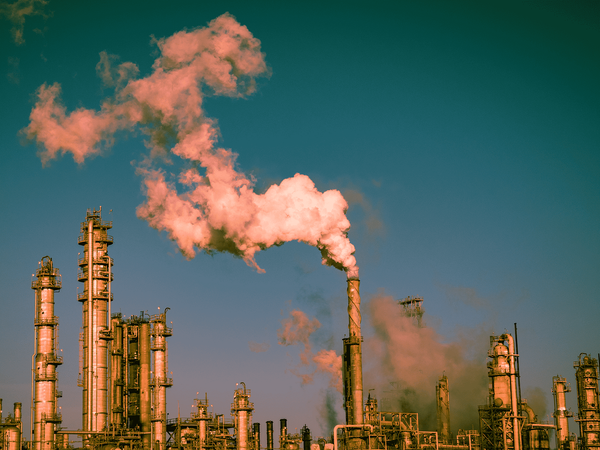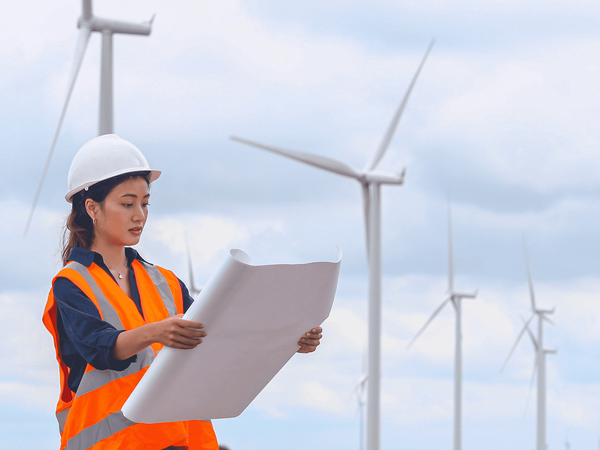Food Production: can a food waste disposer fight climate change?

The UNEP Food Waste Index 2021 states that in 2019, around 931 million tonnes of food waste were generated around the world – of which 61% came from households, 26% from food service and 13% from retail. Food is currently responsible for approximately 30% of global greenhouse gas emissions.
Food production
Fighting climate change usually associates with focusing on energy-efficient clean energy solutions, renewables or the transition to low-carbon transport. However, food waste throughout the value chain is also a key contributor to emissions.
Wasting food means wasting resources that eventually release potent greenhouse gas emissions (GHG), such as methane. Figure 1 shows the result from an article published in Science in 2018 – that summarizes food’s share of total emissions during production worldwide.
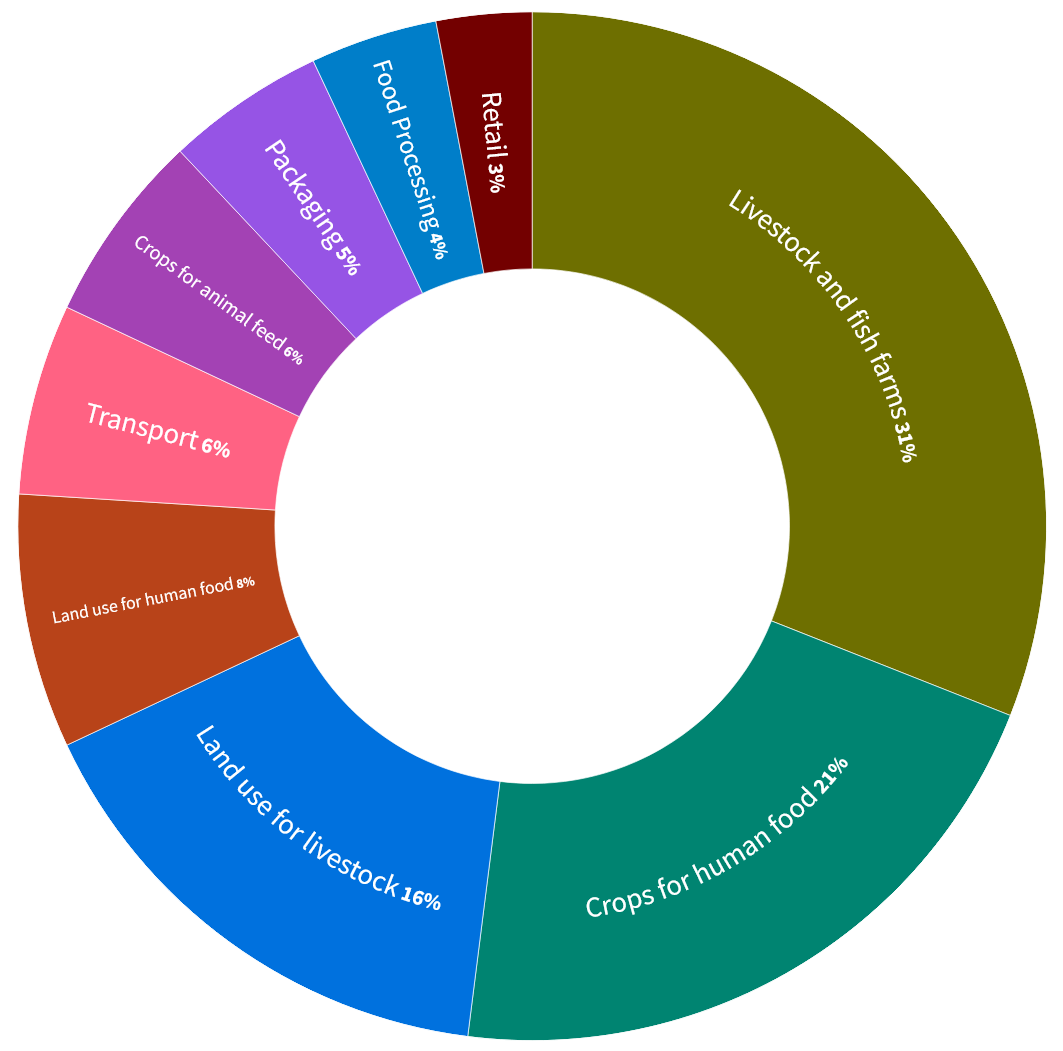
Livestock & fish farms have the highest contribution with 31% of emissions. This category includes animals raised for meat, dairy, eggs and seafood and manure management, pasture management and fuel consumption. However, it excludes the emissions generated by land-use modifications or the supply chain involved in producing animal feed.
About 21% and 6% of food emissions come from crop production for direct human consumption and animal feed, respectively. They are the direct emissions from agricultural production, including emissions from fertilizers and manure usage, methane emissions from rice production, and CO2 emissions from agricultural machinery.
Land use for livestock (16%) and human consumption (8%) is the sum of land use change, organic soil cultivation and ploughing.
The supply chains, which account for 18% of food emissions include energy and resource inputs from food processing, transport, packaging and retail. Interestingly, transport emissions are often a very small percentage of food’s total emissions – only 6% globally.
Sustainable Meat
Global meat production has only increased rapidly over the past 50 years. In Figure 2, we look at the amount of meat produced in 2021 around different continents, measured in tonnes.
Regionally, Asia is the largest meat producer, accounting for 152,000,690 tonnes i.e. around 45% of total meat production. This is also because the continent is home to two of the largest producers: China and India both produced 92,615,944 tonnes and 10,888,240 tonnes, respectively.
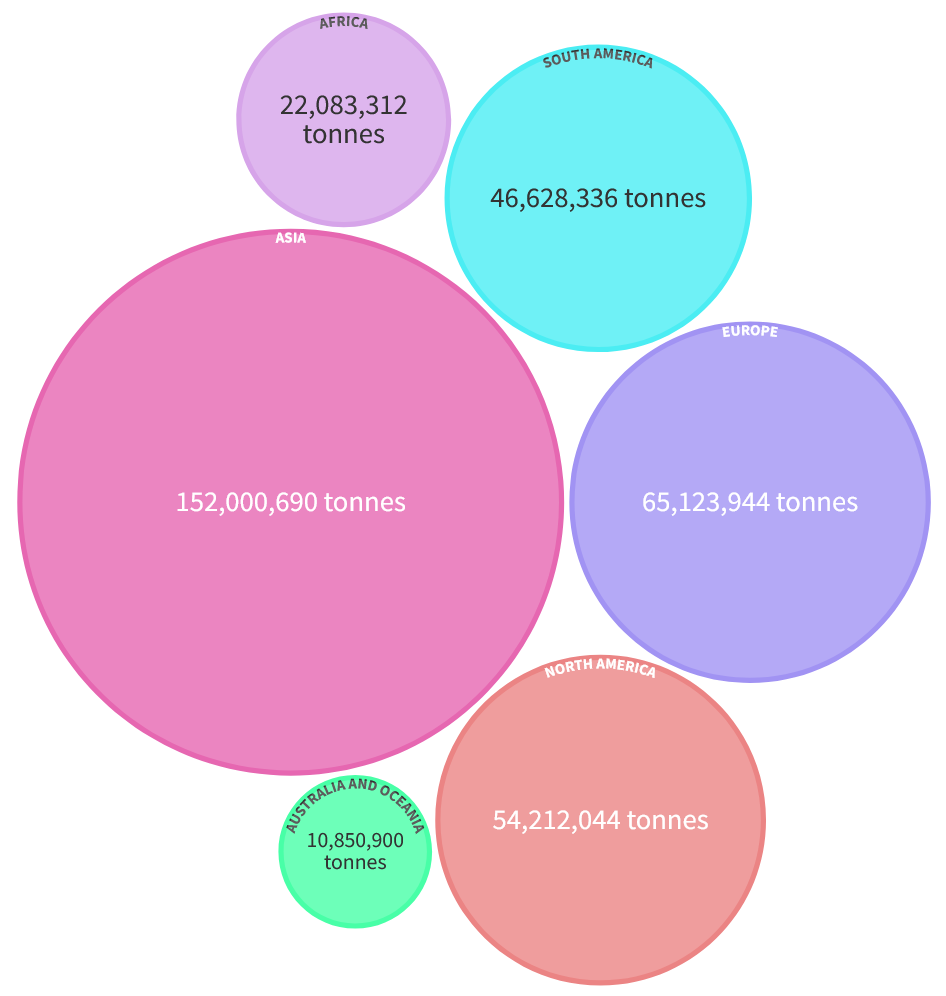
Asia is followed by Europe with 65,123,944 tonnes. North America comes next with 54,212,044 tonnes, which is followed by South America (46,628,336 tonnes), Africa (22,083,312 tonnes) and Australia and Oceania (10,850,900 tonnes).
Although the production of all major meat types has been increasing, the distribution of meat types varies significantly across the world. Although China is the largest meat producer in the world, the United States (US) currently comes first as the largest beef producer in the world.
Figure 3 looks at the GHG emissions from the use of 1 kg of meat and dairy product. The Beef (Beef herd), Lamb & Mutton and Beef (Dairy Herd) are the top three contributors. Poultry meat has the lowest emission among the group, which is about 90% less emission than the Beef herd.
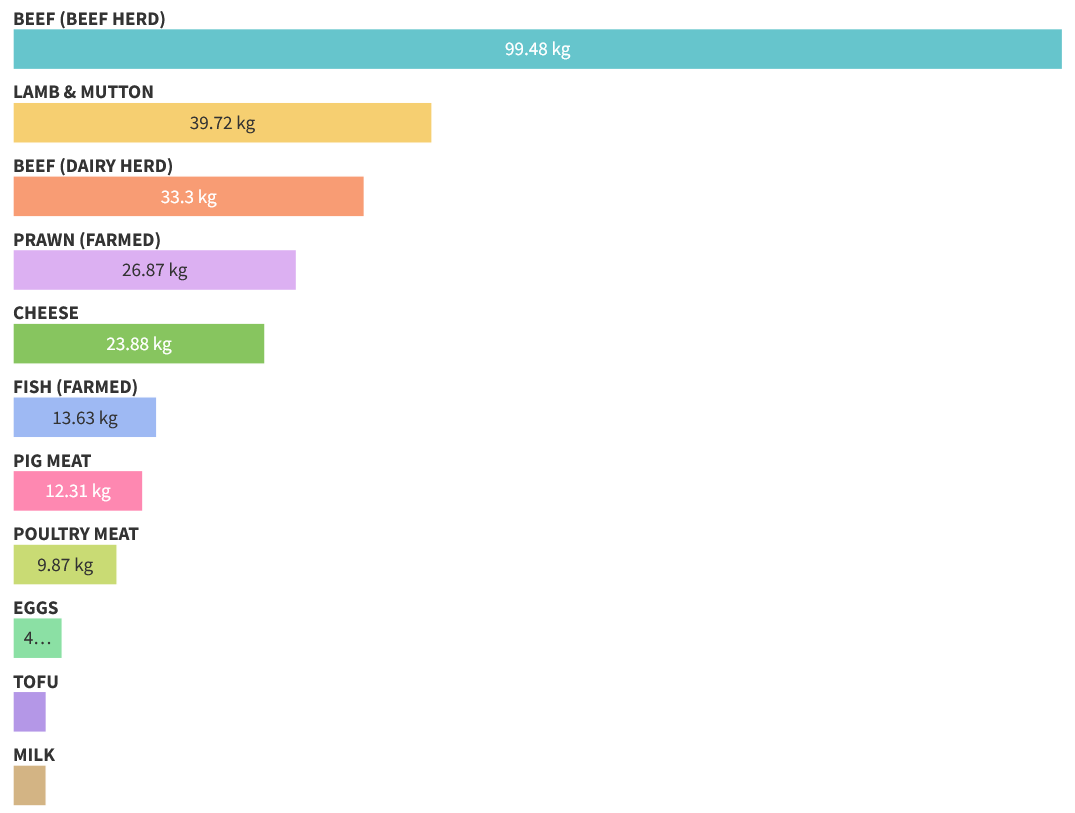
Food waste infographic
According to the UNEP Food Waste Index Report 2021, China produces the highest amount of food waste with an estimated 91.6 million tonnes annually, followed by India's 68.8 million tonnes. The US households throw away an estimated 19.4 million tonnes while France and Germany are estimated to be in the range of five to six million tonnes per year.
When it comes to food waste per capita, however, things tend to look different from the annual household food waste. Australian households are some of the biggest food wasters because although the food waste is the lowest in the group, households generate 102kg of food waste per year, i.e the highest in the group.
Russia has the lowest estimated food waste per capita even though total food waste is higher than Spain and Australia. The US has a slightly higher number at 59kg per capita while the UK and Spain both come to 77kg.
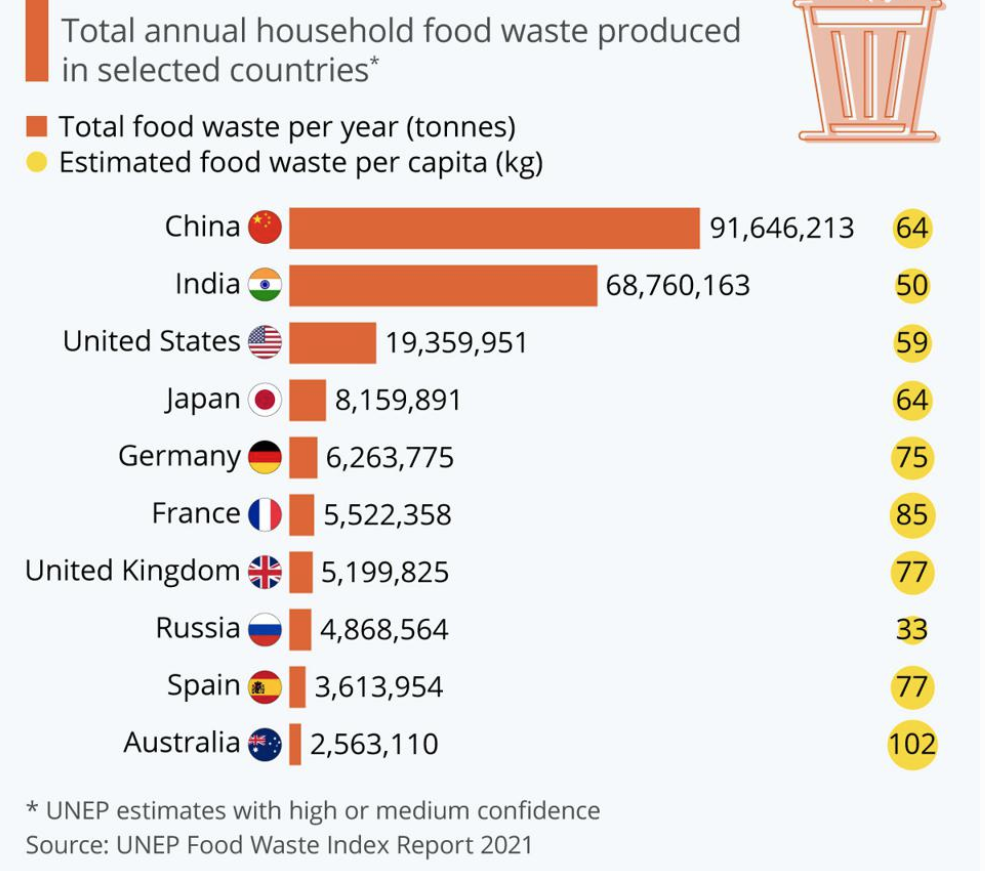
Many countries have a national goal to reduce food waste by 50% by 2030—mirroring the U.N. sustainable development goals. Reducing global food waste could avoid 88.5-102.2 gigatons of CO2 equivalent emissions by 2050. Composting rather than landfill and other organic waste could avoid another gigaton of carbon pollution emissions.
The adoption of new consumer habits, such as consuming plant-based diets, practising conservation and regenerative agriculture, implementing better management techniques for cattle feed and manure, and reducing the use of chemical fertilizers and irrigation, can bring about further advantages in terms of climate preservation and resource conservation.
Food waste disposer
The products from the food waste industry are gaining significant traction due to the increasing demand for sustainable solutions for food waste management. The global Food Waste Market Size is anticipated to reach US$ 85.9 Billion by 2033, growing 5% in the next decade with Germany expected to dominate the market in Europe.
This includes food waste disposer, which is expected to grow in coming years as technological advancements lead to more efficient and cost-effective waste management solutions.
Recent research outlines that food waste disposers can reduce the amount of food waste by 42%, reduce the cost of food waste collection and increase biogas production. The study, which was conducted in Korea concluded that if high energy efficiency facilities are actively introduced, using food waste disposers can be considered a sustainable treatment method for food waste.
In the US, InSinkErator stated that a food waste disposer is an environmentally responsible way to manage more than 31 million tons of solid food waste each year.
In the coming decades, one of the most significant challenges we face is reducing emissions from food production although there are viable opportunities for scaling up low-carbon energy in many areas of energy production, such as renewable or nuclear energy.
By diverting food waste from landfills and reducing the amount of energy required to treat wastewater, food waste disposers can help reduce the emissions associated with food waste and contribute to a more sustainable future.
Despite our inability to halt cattle methane production, we require a comprehensive approach to dietary changes, reduced food waste, enhanced agricultural efficiency, and the implementation of low-carbon food alternatives that are both affordable, scalable and environmentally feasible.
Summary
- China is the world's largest meat producer
- Meat production has the highest contribution to greenhouse gas emissions, with livestock and fish farms accounting for 31% of emissions
- Composting of organic waste could prevent an additional gigaton of carbon pollution emissions
- The use of food waste disposer can reduce the amount of food waste by 42%
